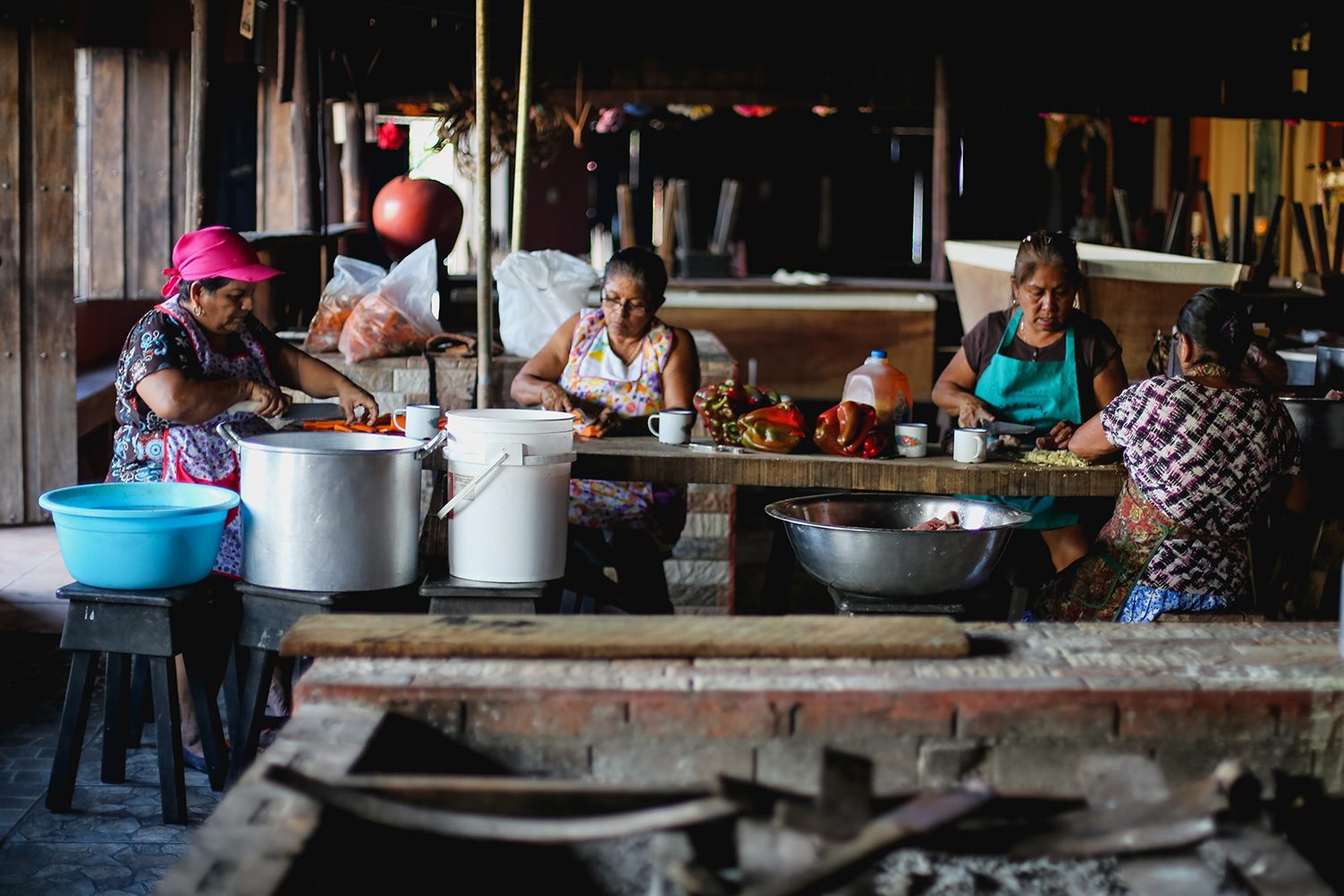
At 64 years old, Maria Elena explains to her granddaughter, Yuleisy, how much pepper and cumin to grind for the corn rice that is being prepared for sale. From her kitchen in Guaitil, Santa Cruz, Maria Elena assures that her granddaughter knows all the recipes by heart and that her granddaughter’s corn tortillas are better than her own.
This scene, captured on a morning that was hot as usual , goes unnoticed. It’s so common that it doesn’t even amaze anyone, but deep down it feeds the province’s culinary story without knowing.

María Elena, at 64 years old, assures that her Guanacastecan dishes are famous in Guatil. She makes tortillas, rosquillas, chicharrones and corn rice, among other recipes. Photo by César Arroyo.
Ever since pre-Columbian times, the woman has been the one in charge of the household and in the kitchen her work stands out out, says writer and cultural anthropologist Carlos Arauz. The man took care of other things, such as defending his family and getting what they could to eat.
As primitive as that sounds, these tasks were burned into the subconscience of societies and it turned from tasks into social “obligations” for women to pass recipes down from generation to generation like Maria Elena and Yuleisy.
In The Task of Feeding Their Own, A Greater Good Was Seasoned
Arauz says clearly that this control that women have in the home and in their kitchens is responsible for the fact that, today, we can continue eating their buns, tamales, and corn pudding.
The great task of cooking changed some and, with time, women used their talent to maintain their families or contribute money to the household.
From La Gordita, To the World
Just like Maria Elena, Fidelina Rosales, better known as “La Gordita,” was able to provide for her family thanks to the stove. She fed them while she “pushed forward” with her business.

La Gordita opens religiously every Sunday to host customers. She has been in the food business for more than 30 years. She says that everything she knows she owes to her grandmother. Photo by César Arroyo.
“La Gordita” gets up at 5:45 am in order to start preparing lunch for the customers that come to her house to eat religiously every Sunday. Sometimes the food is gone before noon. The menu is always the same: meatball soup, chicken cooked in annatto, potatoes and rice with chicken.
She also makes corn rice twice a month. For parties, baptisms or special orders, she breaks protocol and makes it when someone needs it.
“I learned from my grandmother. She used to cook all the time and I learned how to make everything,” she tells us while her sister helps her chop spices for the rice that a customer ordered for the afternoon. She and her sister, “Pachita,” have been cooking for more than 30 years.

Chicken cooked in annatto and served with potatoes is one of La Gordita`s all-star recipes and one of the most traditional dishes in the province. Photo by César Arroyo.
Will it last?
While it may seem that traditional food is “eternal,” specialists assure that as the years pass, it has lost its foothold, but not because of the cooks’ lack of impetus, rather because society has grown more distant from its roots.

Corn rice is one of the most popular Chorotega dishes. Preparing it requires a good chicken, ground corn, spices and several secret ingredients. Photo by César Arroyo.
“Traditions are suffering some,” said Marco Tulio Gardela, another cultural anthropologist. “”In the case of cooking, new generations don’t seem to be interested in learning the recipes, for example, nor in cooking either and you start to see some deterioration of customs.”
Cecilia Garcia, who has been behind the stove at the Virgin of Nicoya Sisterhood for more than 30 years, agrees with Gardela’s assessment, and adds that “young people seem to prefer junk food.”
It’s not a pessimist’s view; she thinks the public that likes traditional food will win the battle, or at least she hopes so.




Comments